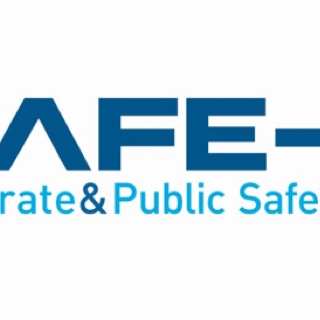Information
-
Audit Title
-
Document No.
-
Client / Site
-
Conducted on
-
Prepared by
-
Location
-
Personnel
Part 1: GENERAL INFORMATION
The responsible person for fire safety
-
Detail of managing agent
-
Name of the responsible person
-
Contact details of responsible person
1 The Building
-
Address of premises
-
Number of Floors
- 1
- 2
- 3
- 4
- 5
- 6
- 7
- 8
- 9
- 10
-
Floor area: (m2 per floor)
-
Floor area: (m2 total)
-
Brief details of construction:
-
Occupancy type:
2 The occupants
-
Maximum number of rented or leased properties in building
-
Estimated number of occupants at any given time: Based on assumed full occupancy ( unit x bedrooms)
3 Occupants at special risk
-
Are there occupants in remote areas?
-
Are there lone workers?
4 Previous Fire loss experience
-
Is there any previous history of fire loss in the premises (if yes give details)
5 Other relevant background
-
Are there any residential properties in or attached to the building
-
Is there a prohibition notice in force? (if yes give date of issue)
-
Is there an alteration notice in force? (if yes give date of issue)
-
Is there an enforcement notice in force? (if yes give date of issue and date of when work is to be completed by)
Part 2: FIRE HAZARDS AND ELIMINATION OR CONTROL
6 Electrical sources of ignition
-
Are reasonable measures taken to prevent fires of electrical origin?
-
Is the fixed wiring installation periodically tested and inspected?
-
Are portable appliances tested/inspected?
-
Is there a suitable policy about the use of personal electrical appliances?
-
Is there a suitable limitation on the use of trailing leads and adapters?
-
Is all electrical equipment tested and records on site
7 Smoking
-
Are reasonable measures taken to prevent fires as a result of smoking?
-
Is smoking prohibited in the building?
-
Is smoking prohibited in appropriate areas?
-
Are there suitable arrangements made for those who wish to smoke?
-
Is there any evidence of breaches of smoking policy?
-
Is the appropriate smoking prohibition notice displayed at the building's entrance?
8 Arson
-
Does the basic security against arson appear reasonable?
-
Is there sufficient control of unnecessary fire load in close proximity to the building or available for ignition by outsiders?
9 Portable heaters and heating installation
-
Is the use of portable heaters avoided as far as reasonably practicable?
-
If portable heaters are used, are the more hazardous types (radiant bars and LPG) avoided?
-
If portable heaters are used are suitable measures taken to minimise the risk of ignition of combustible materials?
-
Are fixed heating installations subject to regular maintenance?
10 Lightning
-
Does the building have lightning protection system if required? (if yes has it been tested and are records of testing kept)
11. Other significant ignition sources that warrant consideration
-
List other ignition sources:
12. Housekeeping
-
Is the standard of housekeeping adequate?
-
Are combustible materials separated from ignition sources?
-
Is the unnecessary accumulation of combustibles and waste avoided?
-
Is there appropriate storage of hazardous materials?
-
Are combustible materials stored appropriately?
13 Hazards introduced by contractors and building works
-
Is there sufficient control over works by contractors (e.g. Permits to work & hot works permits)?
-
Are there arrangements for the safe storage of gas bottles and others hazardous materials
-
Are fire safety conditions and instructions communicated to contractors?
14 Dangerous Substances
-
Has an asbestos survey been undertaken of all common ways?
-
Are dangerous substances present on the premises?
-
Has the risk to relevant persons been adequately eliminated or reduced?
Part 3: FIRE PROTECTION MEASURES
15 Means of escape
-
Is the building provided with adequate means of escape in case of fire?
-
Are there sufficient exits?
-
Are exits easily and immediately openable where necessary?
-
Do fire exits open in the direction of travel where necessary?
-
Have sliding or revolving doors been avoided as fire exits?
-
Are there adequate means of securing exits?
-
Are there reasonable distances of travel where there is a single direction of travel?
-
Are there reasonable distances of travel where there are alternative means of escape?
-
Are escape routes adequately protected?
-
Are escape routes unobstructed?
-
Are there suitable means of escape for disabled occupants?
16 Measures to limit fire spread and development.
-
Is there a sufficient standard of compartmentation and sub-compartmentation?
-
Are linings that promote fire spread avoided as far as reasonably practicable?
17 Escape lighting
-
Is there a reasonable standard of escape lighting provided?
18 Fire safety signs and notices
-
Are fire safety signs and notices suitable and sufficient?
19 Means of giving warning in the event of fire
-
Is a manually operated electrical fire alarm system provided?
-
Is automatic fire detection provided?
-
Is there remote transmission of alarm signals?
20 Facilities, equipment and devices for the protection of Fire-Fighters
-
Types of facilities:
-
Comments and observations:
Part 4: MANAGEMENT OF FIRE SAFETY
21 Procedures and arrangements
-
Person responsible for fire safety:
-
Are there competent persons available to assist in implementing fire safety arrangements?
-
Are appropriate fire procedures in place? (including arrangements for calling the fire service)
-
Is a simple building plan of building displayed and available for first responders?
-
Is the Fire Emergency Plan readily available for occupants and visitors to read?
-
Do routine in-house inspections of fire precautions take place?
22 Training and drills
-
Are staff given instruction prior to visiting premises
-
Is a safe working practice in place for lone workers visiting building?
-
Are staff with special responsibilities given appropriate training?
23 Testing and maintenance
-
Is the workplace adequately maintained?
-
Is there routine checks of fire doors and final exit doors?
-
Other relevant inspection and test
24 Records
-
Are there records of staff training and instruction?<br>
-
Are there records of maintenance and testing of other fire protection systems?
Part 5: RISK RATING AND RECOMMENDATIONS
Risk Items
-
Item 1
-
Probability (likelihood of fire)
-
Consequence (impact on life safety)
-
Risk rating score (probability x consequence)
- 1
- 2
- 3
- 4
- 5
- 6
- 7
- 8
- 9
- 10
- 11
- 12
- 13
- 14
- 15
- 16
- 17
- 18
- 19
- 20
- 21
- 22
- 23
- 24
- 25
-
Recommendations
-
Action
-
Item 2
-
Probability (likelihood of fire)
-
Consequence (impact on life safety)
-
Risk rating score (probability x consequence)
- 1
- 2
- 3
- 4
- 5
- 6
- 7
- 8
- 9
- 10
- 11
- 12
- 13
- 14
- 15
- 16
- 17
- 18
- 19
- 20
- 21
- 22
- 23
- 24
- 25
-
Recommendations
-
Action
-
Item 3
-
Probability (likelihood of fire)
-
Consequence (impact on life safety)
-
Risk rating score (probability x consequence)
- 1
- 2
- 3
- 4
- 5
- 6
- 7
- 8
- 9
- 10
- 11
- 12
- 13
- 14
- 15
- 16
- 17
- 18
- 19
- 20
- 21
- 22
- 23
- 24
- 25
-
Recommendations
-
Action
-
Recommendations
-
Action
-
Received by responsible person / representative
-
Assessor Signature
-
Pictures
Re-Assessment
-
Recommended date for re-assessment












